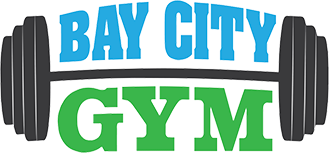Article by – Hamish Newall Owner Operator and Coach
Mobility is a cornerstone of physical health and overall well-being, yet it often gets overshadowed by other fitness goals like strength or endurance. However, without good mobility, these other aspects of fitness can suffer, leading to a higher risk of injury and limiting your body’s ability to perform optimally. Understanding the importance of mobility and how to improve it can help you maintain a healthy, active lifestyle well into old age.
What Is Mobility?
Mobility refers to the ability of a joint to move actively through its full range of motion. It’s different from flexibility, which is the ability of a muscle to stretch. While flexibility is important, mobility involves the coordination of muscles, ligaments, and tendons to produce movement across a joint. Good mobility allows for smoother, more efficient movements and reduces the risk of strain and injury.
Why Is Mobility Important?
Injury Prevention: Poor mobility often leads to compensatory movements, where other muscles and joints take on the load that should be managed by the primary movers. This can cause imbalances and increase the likelihood of injury, especially in high-impact activities like running or lifting weights.
Improved Performance: Whether you’re an athlete or just someone who enjoys recreational sports, good mobility can enhance your performance. It allows you to move more freely and efficiently, leading to better technique and more power in your movements.
Daily Functionality: Mobility isn’t just for athletes. It’s essential for everyday activities like reaching for something on a high shelf, bending down to pick up an object, or even getting out of bed in the morning. As we age, maintaining good mobility becomes increasingly important for preserving independence and quality of life.
Pain Reduction: Many chronic pain issues, particularly in the lower back, hips, and shoulders, can be traced back to poor mobility. By improving mobility, you can alleviate pressure on joints and muscles, reducing pain and discomfort.
How to Improve Your Mobility
Dynamic Stretching: Unlike static stretching, which involves holding a stretch for a period, dynamic stretching involves moving through a range of motion repeatedly. This type of stretching warms up the muscles and joints, preparing them for activity. Examples include leg swings, arm circles, and hip rotations.
Foam Rolling: Foam rolling, or self-myofascial release, helps to release tight muscles and improve blood flow, which can enhance mobility. Spend time rolling out areas like your calves, quads, hamstrings, and back to break up adhesions and improve tissue quality.
Joint-Specific Exercises: Focusing on exercises that target specific joints can help improve their range of motion. For example, ankle mobility drills, hip openers, and thoracic spine rotations can address common areas of tightness and restriction.
Yoga and Pilates: Both yoga and Pilates emphasize controlled, mindful movements that enhance flexibility, strength, and mobility. These practices encourage you to move your joints through their full range of motion while building stability and muscle control.
Classes at Bay City Gym: Mindful Movement and Body Balance both have full-range of movement and stretching exercise incorporating balance, stability and mobility. Use the Bay City Gym app to book your class now.
Consistency Is Key: Like any aspect of fitness, improving mobility requires consistency. Incorporate mobility exercises into your daily routine, even if it’s just for 10-15 minutes a day. Over time, you’ll notice significant improvements in your range of motion and overall physical comfort.
Strength Training with Full Range of Motion: Lifting weights with a focus on maintaining a full range of motion during exercises can improve both strength and mobility. For example, deep squats and overhead presses challenge your body to move through its full capacity, promoting joint health and flexibility.
Listen to Your Body: Pay attention to how your body feels during and after exercises. If certain movements feel restricted or uncomfortable, that’s a sign you may need to work on mobility in that area. It’s essential to progress gradually and avoid pushing too hard, as this can lead to injury.
Conclusion
Mobility is a crucial, yet often overlooked, aspect of physical fitness. It not only enhances athletic performance but also plays a vital role in injury prevention and daily functionality. By incorporating mobility exercises into your regular fitness routine, you can improve your body’s range of motion, reduce pain, and maintain a higher quality of life. Whether you’re an athlete, a fitness enthusiast, or someone simply looking to stay active as you age, prioritizing mobility is key to unlocking your body’s full potential.


